Epic explains how Paragon was broken, and how they're fixing it
Game director Steve Superville on the game’s radical new changes
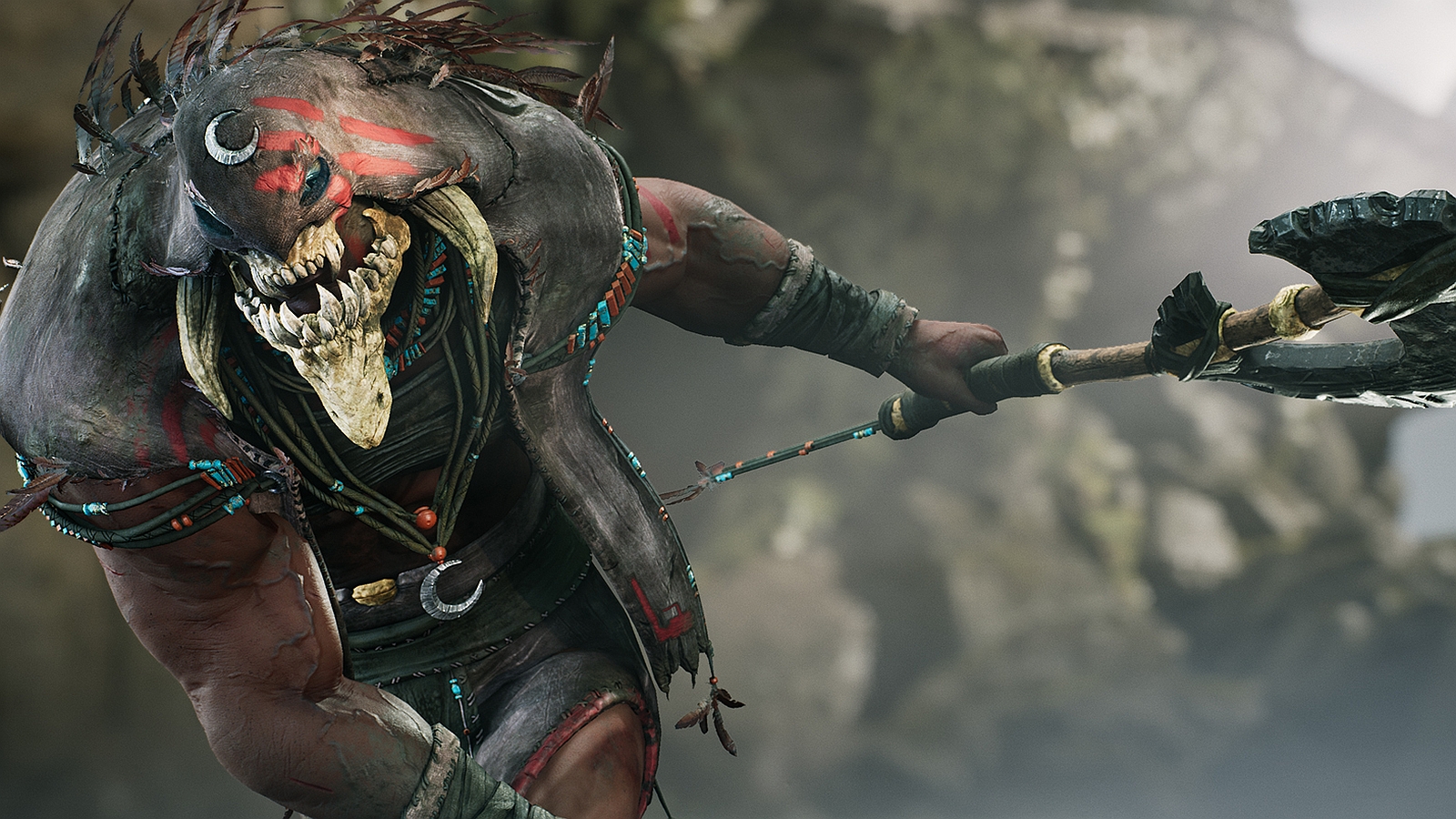
Mere weeks into its early access phase, it was clear that Paragon was a great game with some serious flaws. Bold design decisions on the part of Epic Games were having dire consequences on the fledgling metagame, compressing layers of tactical choices into fewer strata and thereby reducing the options for counterplay. In the MOBA landscape, uniqueness is any game’s most valuable asset, but in some cases Paragon’s rejection of generic conventions simply wasn’t working. Big change was needed.
The game has been constantly reiterating its design in the form of weekly balance patches, but a much wider, wholesale set of improvements is now on the way in the game’s biggest shakeup to date. Some adjustments are already live, and have made a colossal difference to player experience in Paragon’s beta servers. Others, as I experienced in a closed build reserved only for us terribly nosey journalists and the game’s internal team, are only just arriving today. I caught up with Steve Superville, the game’s director and man with a plan, to discuss how the team turned things around and what can be expected from Paragon’s future.
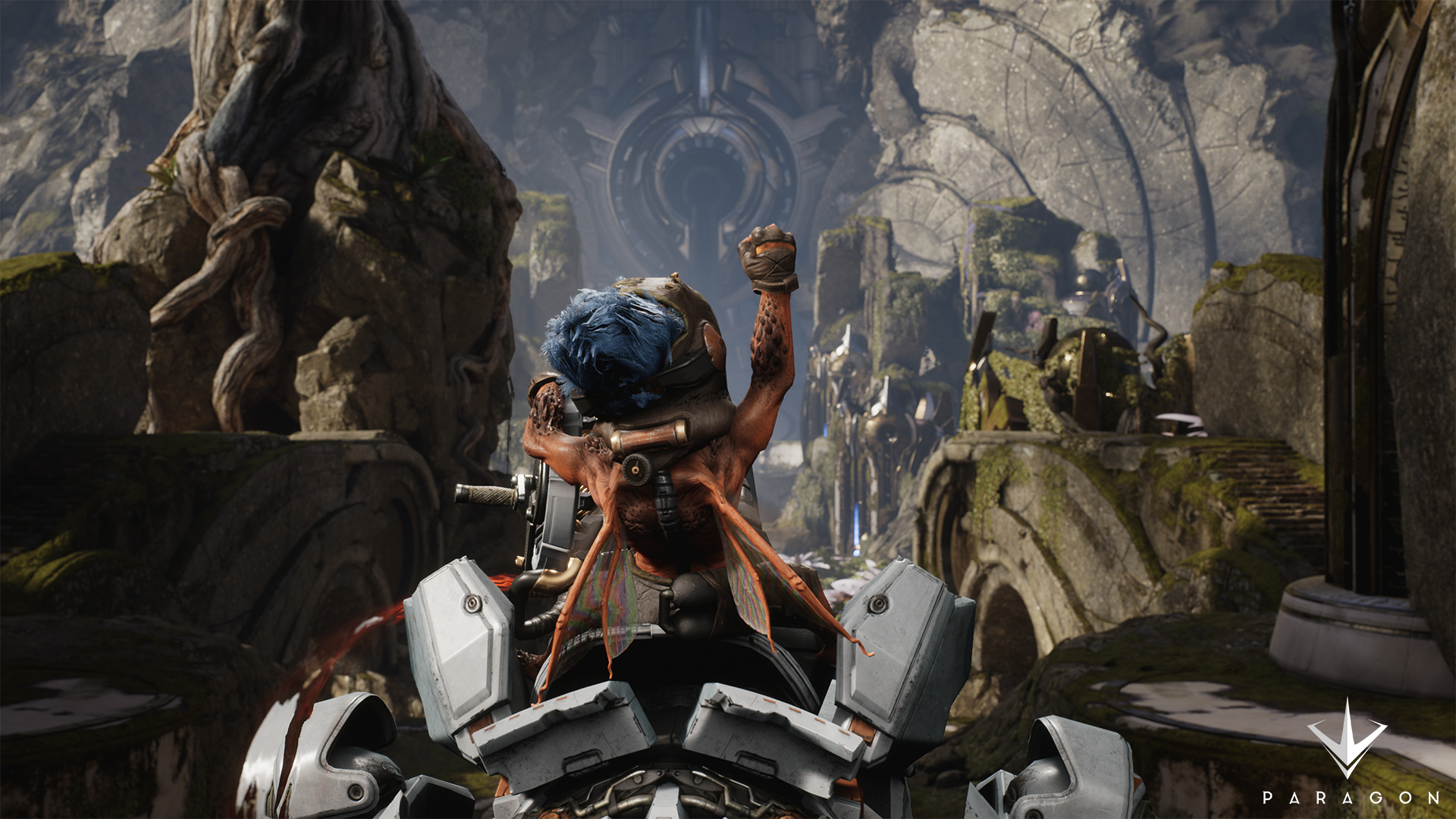
The most glaring problem facing Paragon’s beta was the dominance of ranger classes. Mages, tanks, bruisers, and supports didn’t stand a chance against the three primary culprits, who were completely unassailable in the late game. Once within firing range it was game over, leading to compositions where three or four late-game carries would steamroll the competition with ease. “Crit was a little out of control.” Steve explains. “Previously [rangers] would burn you down before you could do anything. Now [the opposition] lives long enough to actually deal damage back and make some trades.” In practical terms this means that the standard crit modifier has been reduced to 150% from 200%, and each individual card now provides less chance of a critical strike. Building early crit just became a whole lot less appealing, and the results have been overwhelmingly positive for class viability. “It wasn’t really wasn’t a nerf to rangers and people who use crit, it was a buff to support characters. Now a ranger actually needs a support hero with the for survivability… you have to have a Decker, Muriel, Rampage or steel to tank some of the damage and peel for you.”
It’s not quite a shooter... Paragon is still largely about positioning
This isn’t the only adjustment that makes the life of a Ranger harder. A few weeks ago Epic cranked up the basic movement speed of every hero in the game in order to increase opportunities for mechanics-focused counterplay. “It was really hard to outplay with mechanics, rangers in particular because it was hard to miss your basic attack. People keep on saying ‘auto-attack’ and it’s not-auto attack, it’s a basic attack, which means you actually must aim in order to hit. Anyway there were a lot of comments about missing counterplay and MOBAs are built on being able to out-predict somebody and make important positional decisions.”
The difference is subtle, but its effects keenly felt in one versus one duels. It’s now entirely possible to avoid fight-changing volleys that would previously have been guaranteed to strike. Such a wide-reaching change has affected every single hero, and almost every ability in the game. “Obviously it becomes harder for everybody to do everything. It becomes easier to walk out of Gideon’s ult, it becomes harder for ranged characters to hit their basic attack. Everything becomes harder.” Partially as a result of this increased skill cap, mages are soon to receive a substantial buff to their cast range, allowing them to harass from a safer distance. The kinks have yet to be fully ironed out—it is now easier than ever to avoid Howizter or Gadget’s area of effect abilities—but the nerf to critical strikes has mitigated some of the damage this would cause to the effectiveness of AoE heroes.
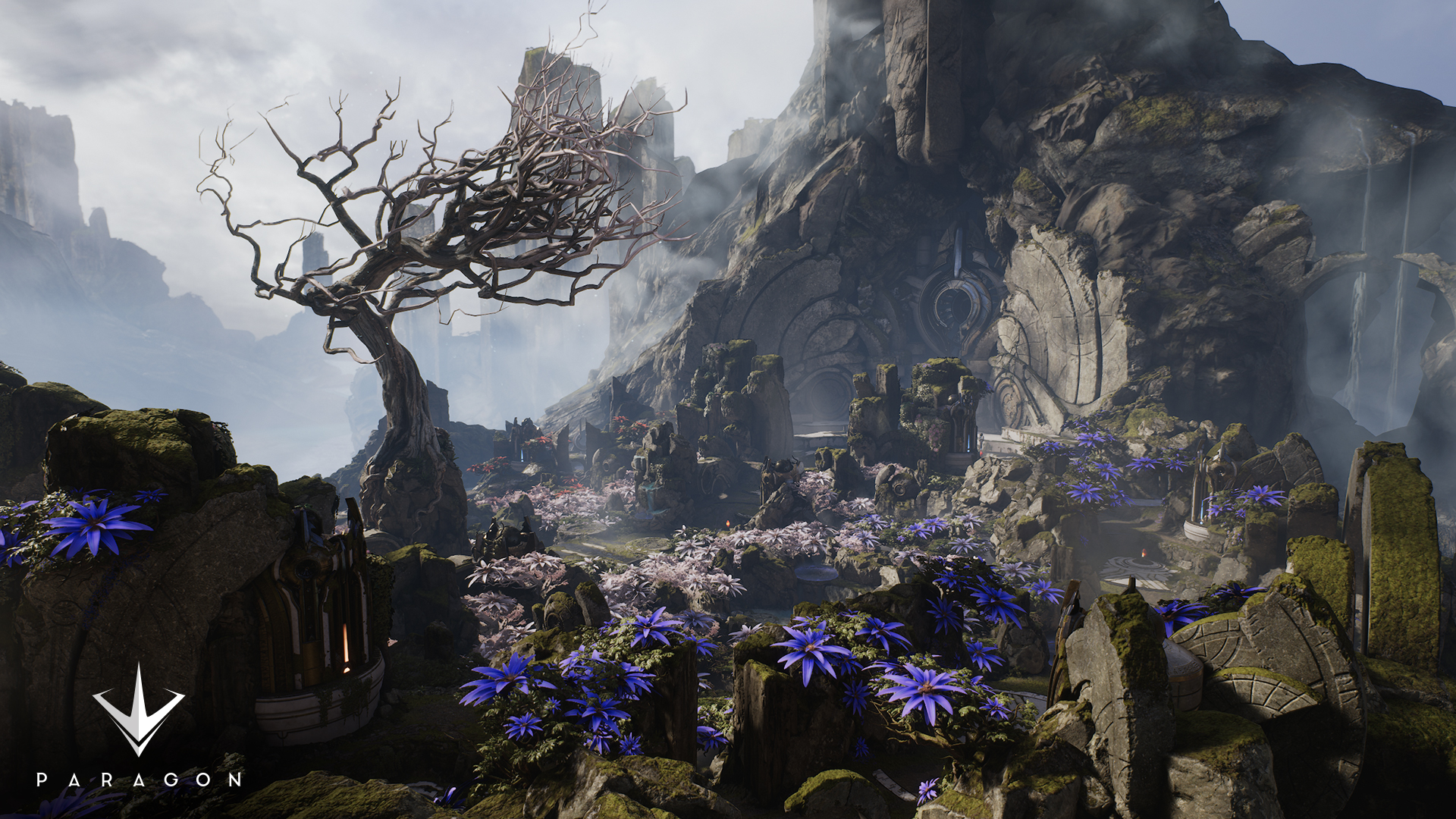
Keep up to date with the most important stories and the best deals, as picked by the PC Gamer team.
Superville is adamant that this change strikes the balance between shooter-like micro and steadier, MOBA-like pacing just right. “It’s not quite a shooter—there are still no headshots, [each hero] is still an entire capsule. Rampage can’t raise his arm and then you shoot underneath it as happens in Gears of War. Paragon is still largely about positioning.”
These small changes have brought much needed equilibrium to team compositions, but have failed to address Paragon’s other glaring problem: the deathball. For that, Epic needed an entirely different solution. Unlike League of Legends or Dota 2, the economic maths in Epic’s MOBA is exceedingly generous. Not only does the last hitter receive the full CXP amount, but every nearby ally receives exactly the same amount as well. There is no real incentive for teams to split up and lane in the early game; roaming the jungle as a group and then pouncing on a single tower yields the same, or sometimes greater, economic rewards. Unstoppable five-man assaults in the first three minutes are commonplace.
[Deathballing] is one of the strategies that is really easy for pick up groups to do and really hard for pick up groups to counter.
The system was originally implemented with the best of intentions on the part of Epic. “The situation we wanted to avoid in the first iteration of card power was inter-team toxicity. If gold goes to only one person and that’s it, then the only person who can itemise is the carry, the support doesn’t get to do anything.” CXP sharing did undoubtedly alleviate this problem—Paragon players aren’t fighting over in-lane currency, but Steve admits that the consequences of such broad generosity eventually made the situation untenable. “It’s not totally broken behaviour but it does diminish the amount of strategies that players had available to them.” “[Deathballing] is one of the strategies that is really easy for pick up groups to do and really hard for pick up groups to counter. I’d say that’s why it became so prevalent, not because it’s the be all and end all. Unfortunately that’s enough to cause problems because most games of Paragon aren’t played between organised teams.”
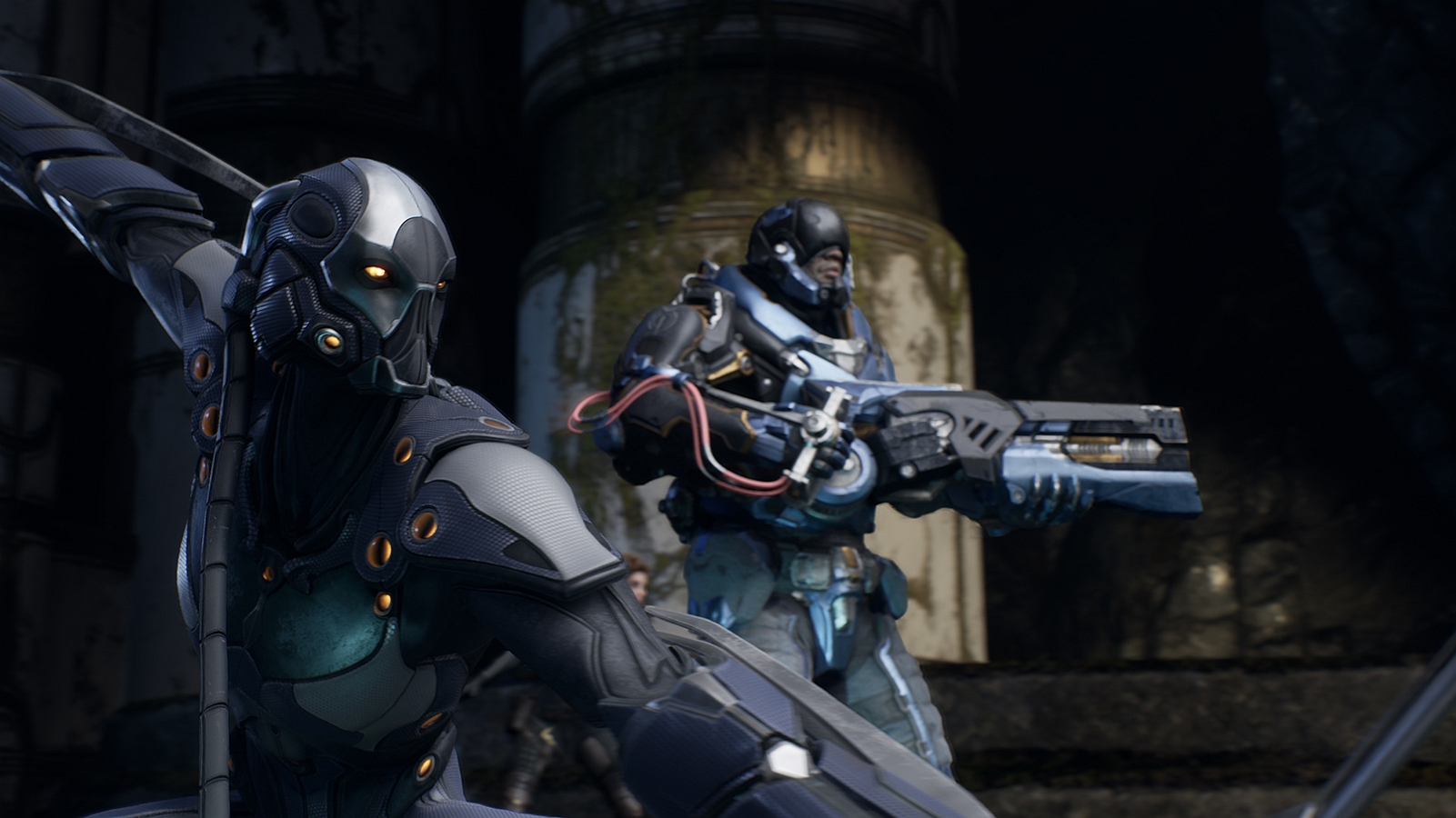
The proposed solution will, Steve hopes, keep Paragon’s unique CXP sharing dynamic, but curtail the tedious five-player scrums infuriating the community. “We’re changing the behaviour so that it encourages groups of two to stay together—that’s the optimal path and anything else will start to have diminishing returns. Let’s assume for a second that you get a kill and the game gives out 100 CXP, the last hitter will get 100, and everyone who helps them will split another hundred, so two people get 100 / 100, three people get 100 / 50 / 50, four get 100 / 33 / 33 / 33.” In addition to these hard caps, CXP in jungle camps will not be shared between players at all, meaning that the traditional ‘three camps, then red, then blue’ itinerary will be blown out of the water. Players are going to have to lane, and that’s that.
However, even if Paragon’s players are skillfully guided toward a more traditional laning phase thanks to economic changes, Epic still feels that players can maintain a map-wide presence too easily thanks to fast travel mode. Entering fast travel allows players to dart between right, left, and mid with relative ease. It’s commonplace to see a fight commence across the map and then arrive in the adjacent lane before it’s over, something inconceivable in other MOBAs. To remedy this hyper-mobility Epic is considering lowering the speed of fast travel and including a basic teleport to allied structures in every hero’s kit. This ability will feature a medium length cooldown, and therefore knowing which players have burned their teleport, and whose are still active, will be key.
In the same way that our newer characters are a lot more ‘fun’, we’re going to start pushing the boundaries
This change is also fundamental to remedying another of Epic’s Paragon bugbears: game length. Six months ago, the team stressed that its ideal match duration was half an hour. In reality, matches in the beta almost always continue past the forty minute mark, some even extending beyond fifty. As a result, automatic inhibitor respawn is being culled. Instead, players will be able to ‘defensively dunk’ the Orb Prime near their own base, causing the inhibitors to reappear. “The hard part is going to be taking the meta changes as a whole. When you’re able to teleport out of your base to get to friendly structure it becomes much easier as you don’t have to run through the entire enemy team. It also means that owning harvesters later in the game is now important.”
The team at Epic are clearly taking an experimental, hands-on approach to these upcoming changes. Superville admits that nothing is yet set in stone, and they have a lot of ideas on how to improve the current state of play, According to him they are “also toying with the idea of allowing you to teleport to the farthest part of your minion wave, so if you can have a wave pushed out then you can get out of your base a bit more easily.”
This desire to draw in the uninitiated has proven divisive to those familiar with the dramatic and outlandish worlds of League and Dota 2. The initial cast of thirteen heroes, whilst polished in design, were archetypal in the extreme. The diversity of a MOBA’s assembled cast of characters is its biggest sell, and Paragon didn’t feel like it was delivering the goods. Superville confirms that the company held back with the original designs for a reason. “It was a conscious decision to make a MOBA experience that was familiar, that everyone can jump in and go’ who you wanna play?’ Everyone understands an archer, everyone understands the guy with two guns, everyone understands the guy with a shield who can bodyslam. We needed to start in a place that would just allow people to understand our game.”
Newer additions to the roster such as Grim.exe and Riktor have expressed a more whimsical side to Paragon’s personality, one that Epic promises the game will increasingly come to embrace through concept skins and character design. “In the same way that our newer characters are a lot more ‘fun’, we’re going to start pushing the boundaries… but if we started with lollipops and rainbows there are a lot of players who’d go ‘this is garbage, I’m a grown man, I don’t want lollipops and rainbows’. And you have to start with a baseline that’s comfortable for a large group of players. I can’t wait to see the reaction to the hero after Khaimera…”
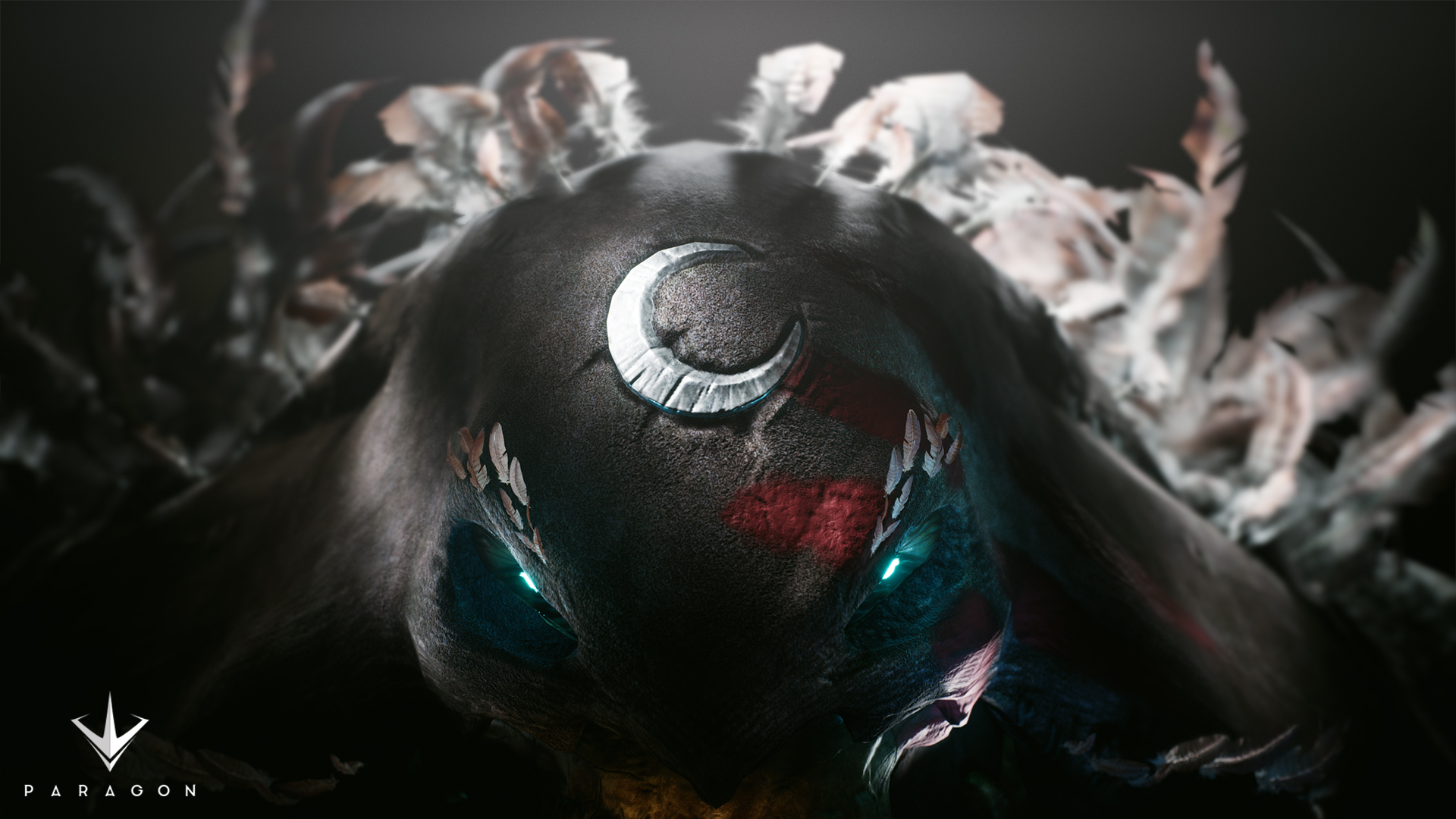
Paragon now features a hook-based hero, as well as a powerful turret mage—more like the MOBA character types we’re used to seeing. What next? Superville has his own ideas. “What I would personally like to see and what we’re doing aren’t necessarily the same thing. We’ve got a lot in the pipeline but i’d really like to introduce is an illusionist—a trickster who makes you think they’re in one place when they’re really another.” As if Shaco on an isometric plane wasn’t terrifying enough...
The changes above are a small smattering of a game-wide revamp of massive proportions. Hero passives have been dumped, basic attacks now scale automatically and don’t require levelling, minion waves have been reduced in number but given a substantial damage buff, the list goes on and on, but you can read a breakdown of the upcoming changes here.
Paragon appeared to be sinking, but the vast array of changes, along with an open ear on the part of Epic, have brought closer in line with the high expectations of the MOBA genre. Undoubtedly the introduction of draft mode and the plethora of new cards to be introduced to the game will tempt back old players, but the key to Paragon’s success lies with capturing an audience that doesn’t know its top lane from its elbow. A million beta signups is an encouraging figure, but whether the masses will be sold on the game’s vision later in the year remains to be seen.

